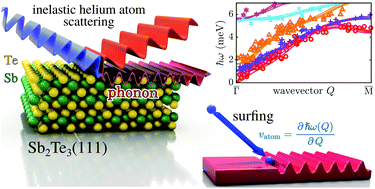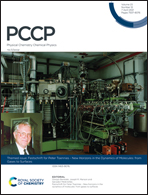Inelastic helium atom scattering from Sb2Te3(111): phonon dispersion, focusing effects and surfing
Abstract
We present an experimental study of inelastic scattering processes on the (111) surface of the topological insulator Sb2Te3 using helium atom scattering. In contrast to other binary topological insulators such as Bi2Se3 and Bi2Te3, Sb2Te3 is much less studied and the as-grown Sb2Te3 sample turns out to be p-doped, with the Fermi-level located below the Dirac-point as confirmed by angle-resolved photoemission spectroscopy. We report the surface phonon dispersion along both high symmetry directions in the energy region below 11 meV, where the Rayleigh mode exhibits the strongest intensity. The experimental data is compared with a study based on density functional perturbation theory calculations, providing good agreement except for a set of additional peculiar inelastic events below the Rayleigh mode. In addition, an analysis of angular scans with respect to a number of additional inelastic events is presented, including resonance enhancement, kinematical focusing, focused inelastic resonance and surfing. In the latter case, phonon-assisted adsorption of the incident helium atom gives rise to a bound state where the helium atom rides the created Rayleigh wave.

- This article is part of the themed collection: Festschrift for Peter Toennies - New Horizons in the Dynamics of Molecules: from Gases to Surfaces


 Please wait while we load your content...
Please wait while we load your content...